- Best Flowers to Plant in December
- Pansies
- Violas
- Primroses
- Ornamental Kale
- Sweet Alyssum
- Beautiful Blooms for Winter Gardens
- Snowdrops
- Hellebores
- Winter Jasmine
- Witch Hazel
- Pansies
- Winter-flowering Heathers
- Herbs to Grow in December
- 1. Basil
- 2. Chives
- 3. Parsley
- 4. Rosemary
- 5. Thyme
- Fragrant and Flavorful Choices
- 1. Lavender
- 2. Mint
- 3. Rosemary
- 4. Basil
- 5. Chamomile
- Vegetables to Sow in December
- Fresh Produce for Winter Harvest
- Leafy Greens
- Root Vegetables
- Herbs
- Winter Squash
- Cabbage
- Onions and Garlic
- Winter Bulbs to Plant in December
- Snowdrops
- Crocuses
- Daffodils
- Tulips
- Hyacinths
- Amaryllis
- Add Color and Texture to Your Garden
- 1. Flowers with Bold Colors
- 2. Plants with Interesting Leaves
- 3. Plants with Textured Flowers
- 4. Ornamental Grasses
- Indoor Plants to Cultivate in December
- Pothos
- Sansevieria
- Peace Lily
- Succulents
- Herbs
- Greenery for the Winter Months
- 1. Winter Heathers
- 2. Ornamental Cabbages and Kale
- 3. Evergreen Ferns
- 4. Winter-flowering Jasmine
- 5. Pansies
- 6. Winter Aconites
- 7. Cyclamen
- 8. Wintergreen
- Conclusion
- Questions and Answers:
- What flowers can I sow in December?
- Can I sow herbs in December?
- What vegetables can I sow in December?
- Should I sow my seeds directly in the ground in December?
- Can I start my vegetable garden in December?
- What are some flower varieties that can be sown in December for early spring blooming?
- Can I sow vegetable seeds indoors in December?
- Videos: 10 Vegetables and Herbs PERFECT for SHADE Garden Spots
December may seem like an unusual time to start sowing seeds, but there are still plenty of options for a productive garden. Whether you have an outdoor space or just a windowsill, you can enjoy the satisfaction of growing your own flowers, herbs, and vegetables all year round. In this article, we’ll explore some suggestions for what to sow in December to keep your garden thriving.
Flowers: Despite the cold weather, there are a few flowers that can be sown in December for early spring blooms. One popular choice is sweet peas, which can be sown directly into the ground or in containers. They will withstand a light frost and will reward you with their beautiful colors and sweet fragrance. Another option is winter pansies, which can add a splash of color to your winter garden. Sow the seeds in pots or hanging baskets and keep them in a cool, bright spot.
Herbs: Growing herbs in December can be a great way to enhance your cooking and add fresh flavors to your meals. Some herbs that can be sown in December include parsley, chervil, and coriander. These herbs are easy to grow and can be sown in pots on a windowsill or in a greenhouse. They will provide you with a fresh supply of herbs for months to come.
Vegetables: Even in December, you can still enjoy fresh homegrown vegetables. While the range of vegetables that can be sown is limited, there are a few options to consider. Winter salad leaves, such as kale and spinach, can be sown in December for a nutritious addition to your meals. You can also try sowing Brussels sprouts or winter cabbage for a winter harvest. For an early start on spring vegetables, you can sow onion and shallot sets in December.
Tip: Before sowing any seeds in December, check the specific planting instructions for each plant variety. Some plants may require special conditions or protection from frost. Also, consider using a greenhouse or providing some extra insulation for your plants to protect them from the cold.
So, don’t let the cold weather deter you from sowing seeds in December. With a little bit of planning and care, you can enjoy the benefits of a productive garden all year round. Whether you choose to sow flowers, herbs, or vegetables, December is a great time to get started and prepare for a bountiful garden in the coming months.
Best Flowers to Plant in December
December is a great time to start planting flowers that can withstand the cooler temperatures and add color to your garden during the winter months. Here are some of the best flowers to plant in December:
Pansies
- Pansies are a popular choice for winter planting because they can tolerate cold temperatures and even a light frost.
- They come in a variety of colors, including purple, yellow, white, and pink, and can add a beautiful splash of color to your garden.
- Make sure to plant them in well-draining soil and provide them with plenty of sunlight.
Violas
- Violas are another great option for winter planting.
- They are similar to pansies but are smaller in size.
- Violas are known for their delicate and vibrant flowers, which come in a range of colors.
- They are frost-resistant and can bloom throughout the winter months, adding a touch of charm to your garden.
Primroses
- Primroses are early-blooming flowers that can thrive in colder temperatures.
- They have vibrant petals in shades of yellow, pink, red, and purple.
- Primroses prefer moist, well-drained soil and partial shade.
- They are perfect for adding a pop of color to your winter garden.
Ornamental Kale
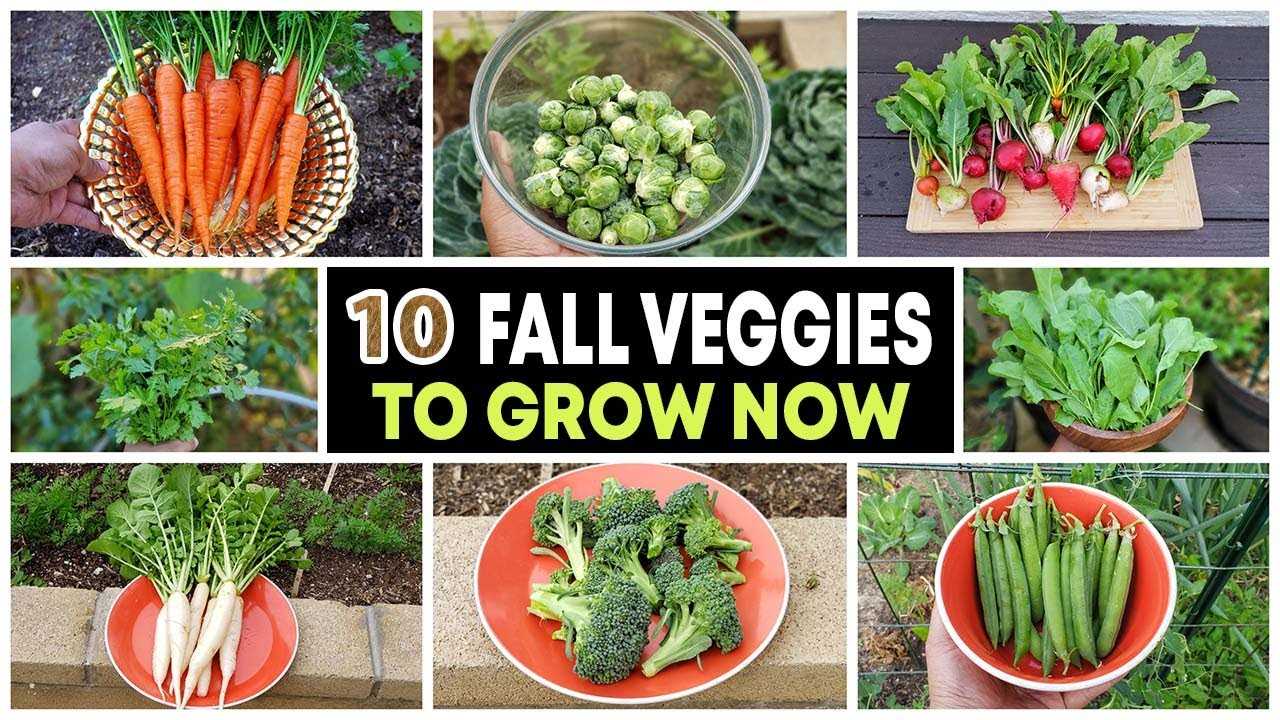
- Ornamental kale is a unique and beautiful plant that can withstand the cold winter weather.
- It has colorful leaves in shades of purple, white, and green, which can add visual interest to your garden.
- Ornamental kale prefers full sun and well-draining soil.
Sweet Alyssum
- Sweet alyssum is a fragrant flower that blooms well in cool temperatures.
- It produces clusters of small flowers in shades of white, pink, and purple.
- Sweet alyssum is perfect for borders, containers, or as a ground cover in your garden.
Planting these flowers in December will not only brighten up your garden during the winter months but will also ensure that you have beautiful blooms to enjoy in the spring.
Beautiful Blooms for Winter Gardens
While winter may not be known for its vibrant flowers, there are actually several beautiful bloomers that can add color and interest to your winter garden. These flowers are hardy enough to withstand colder temperatures and can brighten up your outdoor space even during the coldest months of the year. Here are some stunning winter blooms to consider planting:
Snowdrops
Snowdrops are delicate, white flowers that often appear as the first sign of spring. However, they can also bloom during the winter months, bringing a touch of beauty to your garden. These small, bell-shaped flowers are usually white, but they can sometimes have hints of pink or green. Snowdrops prefer partially shaded areas and well-drained soil.
Hellebores
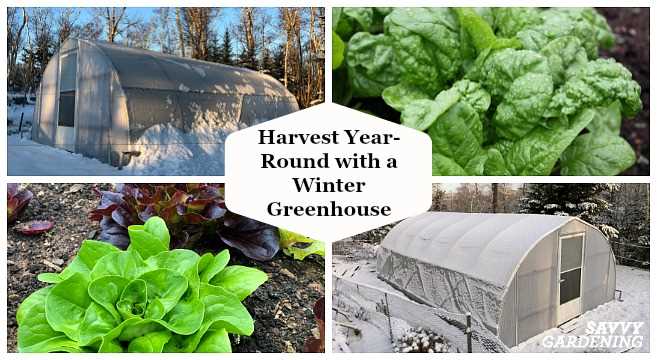
Hellebores, also known as Christmas roses, are another popular winter bloomer. These flowers come in a range of colors, including white, pink, purple, and green. Hellebores are known for their ability to withstand cold weather and can even bloom in the snow. They thrive in shady areas and prefer fertile, well-drained soil.
Winter Jasmine
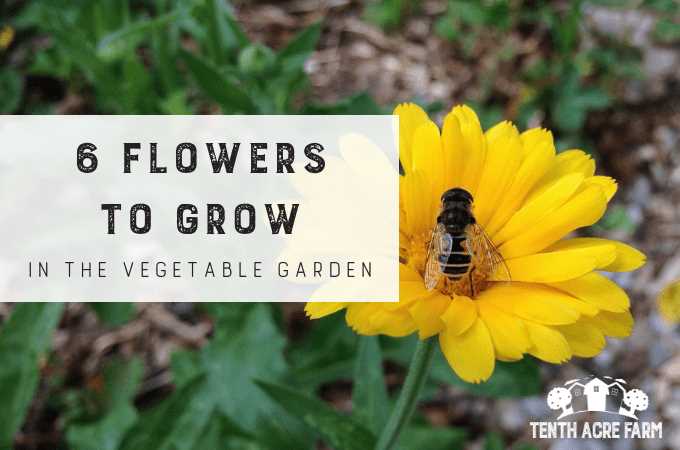
Winter jasmine is a climbing plant that produces bright yellow flowers during the winter months. This fragrant bloomer can add a burst of color to your winter garden and is often seen growing along walls or fences. Winter jasmine prefers full sun or partial shade and well-drained soil.
Witch Hazel
Witch hazel is a shrub that produces beautiful, spidery flowers in shades of yellow, orange, and red. These fragrant blooms can appear as early as December and continue into late winter. Witch hazel prefers full sun or partial shade and well-drained soil.
Pansies
Pansies are a classic winter flower that comes in a wide range of colors. These hardy annuals can withstand freezing temperatures and continue to bloom throughout the winter. Pansies prefer full sun or partial shade and well-drained soil.
Winter-flowering Heathers
Winter-flowering heathers are low-growing plants that produce small, colorful flowers during the winter months. These hardy plants come in a variety of colors, including shades of pink, purple, and white. Winter-flowering heathers prefer full sun and well-drained soil.
Adding these beautiful winter blooms to your garden can help brighten up the dreary winter months and provide a burst of color and fragrance when most other plants are dormant. Remember to choose flowers that are suitable for your climate and growing conditions to ensure their success in your garden.
Herbs to Grow in December
Even in the chilly months of December, you can still enjoy the fresh flavors and aromas of herbs by growing them indoors. Here are some herbs that you can sow and grow during this time:
1. Basil
Basil is a versatile herb that can be grown indoors throughout the year. It thrives in warm and sunny conditions, so make sure to place it near a south-facing window. Regularly harvesting the leaves will encourage bushier growth.
2. Chives
Chives are cold-hardy herbs that can tolerate cooler temperatures. They can be grown indoors in pots or containers. Chives require bright light, so place them near a window where they can receive at least 6 hours of sunlight per day.
3. Parsley
Parsley is a biennial herb that can be grown indoors for its fresh leaves. It prefers cooler temperatures and partial shade, so locate it in a spot with indirect sunlight. Parsley can take some time to germinate, so be patient and keep the soil consistently moist.
4. Rosemary
Rosemary is a woody herb that adds a delightful aroma to your indoor garden. It prefers warm and sunny conditions, so place it near a south-facing window. Ensure that the soil is well-draining and allow the top inch to dry out before watering.
5. Thyme
Thyme is a hardy herb that can thrive indoors during the winter season. It requires bright light, so place it near a south or west-facing window. Thyme prefers well-draining soil, so ensure that the pot has drainage holes.
By growing these herbs indoors during December, you can continue to enjoy their fresh flavors and aromas even during the colder months. Additionally, having an indoor herb garden can also brighten up your home and provide you with an easy and convenient source of fresh herbs for your culinary creations.
Fragrant and Flavorful Choices
If you are looking to add some fragrance and flavor to your garden, here are a few suggestions for what to sow in December:
1. Lavender
Lavender is a beautiful and aromatic herb that can be used in a variety of ways. It can be grown from seeds or cuttings, and it thrives in well-drained soil and full sun. Lavender is known for its calming properties, and its purple flowers add a lovely touch to any garden.
2. Mint
Mint is a versatile herb that can be used in cooking, cocktails, and teas. It is easy to grow from seeds or cuttings, and it prefers moist soil and partial shade. Mint can quickly spread, so it is best to plant it in a container or a dedicated area of your garden.
3. Rosemary
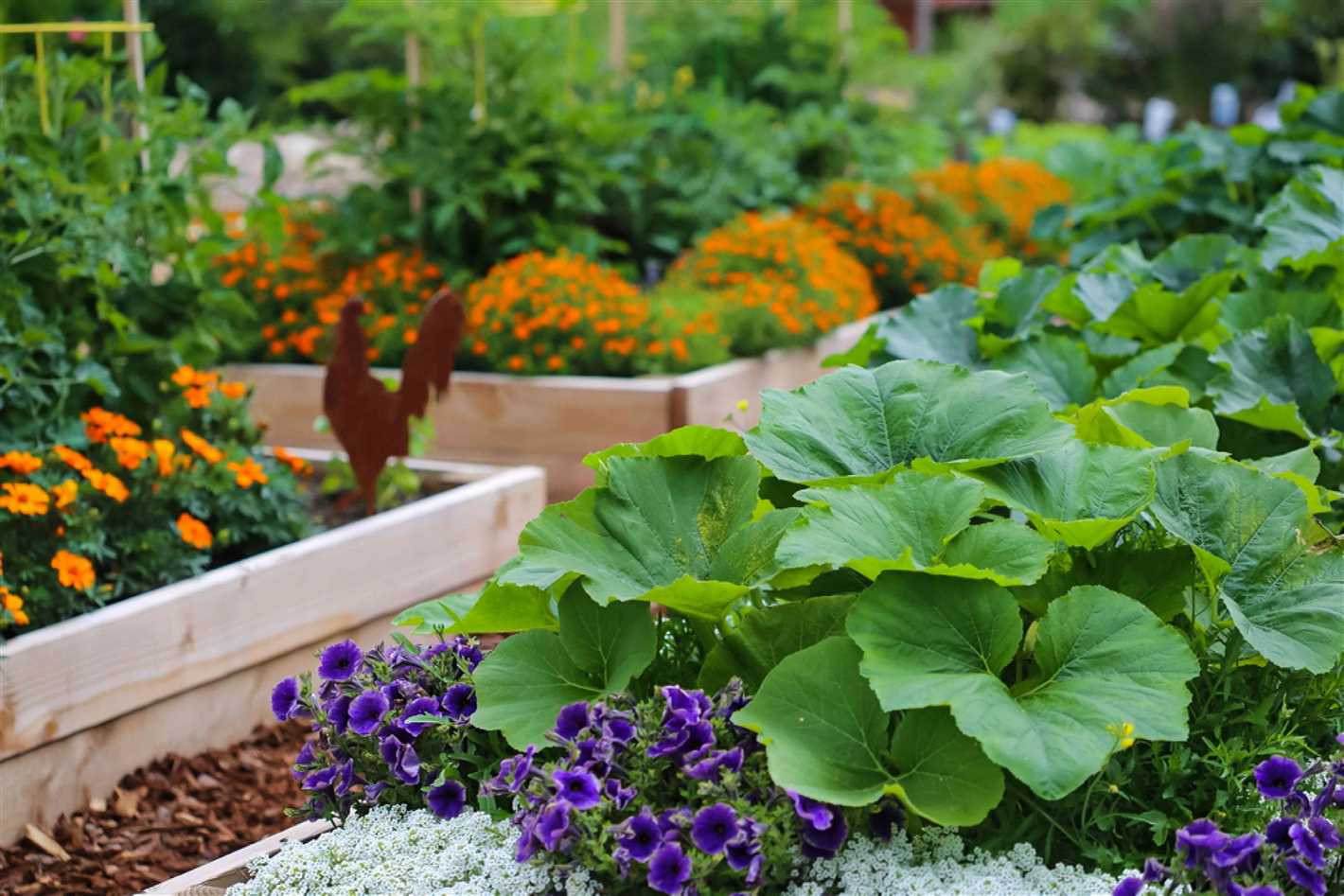
Rosemary is a perennial herb that is both fragrant and flavorful. It can be grown from seeds or cuttings, and it prefers well-drained soil and full sun. Rosemary is commonly used in Mediterranean cuisine and has a distinct aroma that adds depth to dishes.
4. Basil
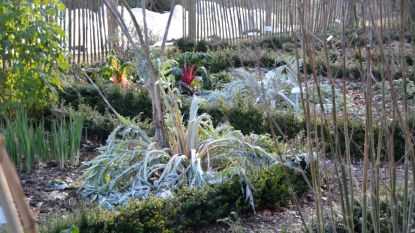
Basil is a popular herb that is commonly used in Italian dishes. It can be grown from seeds or transplants, and it thrives in well-drained soil and full sun. Basil has a sweet and spicy aroma and is a great addition to salads, pasta, and sauces.
5. Chamomile
Chamomile is a soothing herb that is often used to make tea. It can be grown from seeds or transplants, and it prefers well-drained soil and full sun. Chamomile has small daisy-like flowers and a gentle fragrance that is perfect for a calming garden.
There are many other fragrant and flavorful choices to consider for your December garden. Be sure to research the specific needs and planting instructions for each herb to ensure success in your garden. Happy sowing!
Vegetables to Sow in December
- Carrots: Sow carrots in December for an early spring harvest. Choose a variety that is cold-tolerant and can withstand the winter temperature.
- Radishes: Radishes are quick-growing vegetables that can be sowed in December for a harvest in late winter or early spring. They prefer cool weather and can be grown in containers if space is limited.
- Spinach: Spinach is a cold-hardy vegetable that can be sowed in December. It is packed with nutrients and can be harvested throughout the winter months.
- Lettuce: Certain varieties of lettuce such as winter lettuce or cold-hardy lettuce can be sowed in December. They can tolerate low temperatures and make a great addition to winter salads.
- Kale: Kale is a nutrient-dense vegetable that can be sowed in December. It thrives in cold weather and can be harvested throughout the winter season.
- Peas: Some varieties of peas, such as snow peas or sugar snap peas, can be sowed in December. They prefer cooler temperatures and can be grown on trellises or supports.
- Broccoli: Broccoli can be sowed in December for an early spring harvest. It is a cold-hardy vegetable that requires well-drained soil and regular watering.
Fresh Produce for Winter Harvest
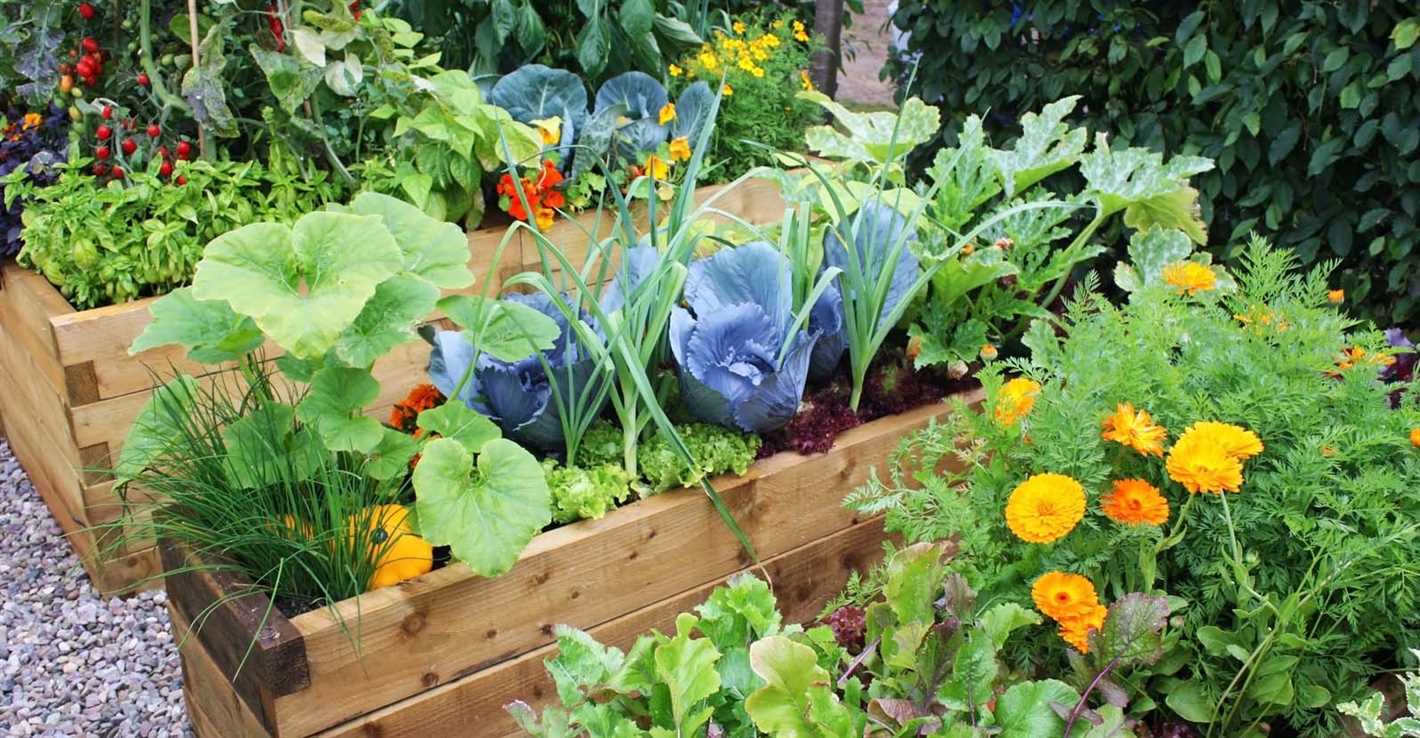
While winter is often associated with barren gardens and lack of fresh produce, there are actually several vegetables that can be grown and harvested during the colder months. Planting these vegetables in December will ensure a bountiful winter harvest.
Leafy Greens
Leafy greens such as kale, spinach, and lettuce are excellent choices for a winter harvest. These hearty vegetables can tolerate the colder temperatures and can be harvested throughout the winter months. Plant them in well-drained soil and keep them protected from harsh winds with row covers or cold frames.
Root Vegetables
Root vegetables like carrots, beets, and radishes can also be grown during winter. They are cold-tolerant and their flavors are often sweeter after exposure to frost. Plant them in deep, loose soil and keep the soil consistently moist to ensure healthy root growth.
Herbs
Many herbs can be grown indoors or in protected areas during winter. Parsley, cilantro, and chives are easy to grow and can be harvested throughout the season. Keep them in pots or containers near a sunny window or under grow lights if you don’t have access to natural sunlight.
Winter Squash
Winter squash varieties such as butternut squash and acorn squash can be planted in December for a winter harvest. These hardy plants can withstand colder temperatures and will continue to ripen on the vine even after the first frost. Be sure to provide them with plenty of space to spread out and access to full sun.
Cabbage
Cabbage is a great vegetable for winter gardening as it can withstand freezing temperatures. Plant cabbage varieties that are specifically bred for winter growing and provide them with well-drained soil and full sun. Cabbage can be harvested when the heads are firm and before the plants start to bolt.
Onions and Garlic
Onions and garlic can be planted in December for a late winter harvest. These crops require a long growing season, so planting them in late fall or early winter will give them enough time to reach maturity. Plant them in well-drained soil and keep the soil consistently moist.
By planting these fresh produce options in December, you can enjoy a winter harvest full of nutritious and delicious vegetables. Make sure to provide them with the necessary care and protection to ensure a successful growing season.
Winter Bulbs to Plant in December
December is a great time to plant winter bulbs in your garden. These bulbs will help to brighten up your garden during the colder months and provide beautiful blooms when spring arrives. Here are some winter bulbs that you can plant in December:
Snowdrops
Snowdrops are one of the earliest bulbs to bloom in the spring. They have dainty white flowers and can tolerate cold temperatures. Plant snowdrop bulbs around trees or in shaded areas of your garden.
Crocuses
Crocuses come in a variety of colors including purple, yellow, and white. They are a great addition to any garden and bloom early in the spring. Plant crocus bulbs in well-draining soil and place them in a sunny location.
Daffodils
Daffodils are known for their bright yellow blooms and trumpet-shaped flowers. They are easy to grow and can tolerate cold temperatures. Plant daffodil bulbs in well-draining soil, around 4-6 inches deep and 3-6 inches apart.
Tulips
Tulips come in a wide range of colors and are a popular choice for spring gardens. They require a period of cold dormancy to bloom, so planting them in December is ideal. Plant tulip bulbs in well-draining soil and provide them with full sun.
Hyacinths
Hyacinths have fragrant flowers that come in a variety of colors including pink, purple, and white. They are perfect for adding color and fragrance to your winter garden. Plant hyacinth bulbs in well-draining soil and place them in a sunny location.
Amaryllis
Amaryllis bulbs produce large, showy blooms that come in a range of colors. They are easy to grow indoors and can add a touch of elegance to any room. Plant amaryllis bulbs in well-draining soil and place them in a bright location with indirect sunlight.
Remember to check the specific planting instructions for each type of bulb to ensure proper planting depth and spacing. With a little bit of planning and preparation, you can have a colorful and vibrant garden even in the winter months!
Add Color and Texture to Your Garden
If you want to add some vibrancy and visual interest to your garden, consider planting flowers and plants that offer a variety of colors and textures. Here are some suggestions:
1. Flowers with Bold Colors
- Tulips: These beautiful flowers come in a range of colors, including vibrant reds, yellows, pinks, and purples.
- Pansies: Pansies offer a mix of bold and delicate colors, making them a versatile choice for adding color to your garden.
- Marigolds: With their vibrant orange and yellow hues, marigolds are sure to make a bold statement in your garden.
2. Plants with Interesting Leaves
- Hostas: These plants have large, lush leaves that come in a variety of shapes, sizes, and shades of green. Some varieties also have variegated or patterned leaves.
- Ferns: Ferns are known for their delicate and feathery leaves, which add a touch of elegance to any garden.
- Coral Bells: Coral bells offer unique foliage in colors ranging from green to purple, often with intricate patterns.
3. Plants with Textured Flowers
- Blanket Flower: This perennial flower has daisy-like blooms with vibrant colors and textured petals.
- Sea Holly: Sea holly features spiky, thistle-like flowers that add an interesting and textural element to your garden.
- Kangaroo Paw: With its unusual tubular flowers and fuzzy texture, kangaroo paw is sure to catch attention.
4. Ornamental Grasses
- Miscanthus: Miscanthus grasses have tall, graceful plumes that sway in the breeze, adding movement and texture to your garden.
- Fountain Grass: This grass variety has fluffy, arching seed heads that resemble fountains, hence the name.
- Maiden Grass: Maiden grass has narrow, silvery leaves and attractive feathery plumes that create a soft and elegant look.
By incorporating flowers and plants with bold colors, interesting leaves, textured flowers, and ornamental grasses, you can create a garden that is visually striking and full of life. Experiment with different combinations to find the perfect mix for your outdoor space.
Indoor Plants to Cultivate in December
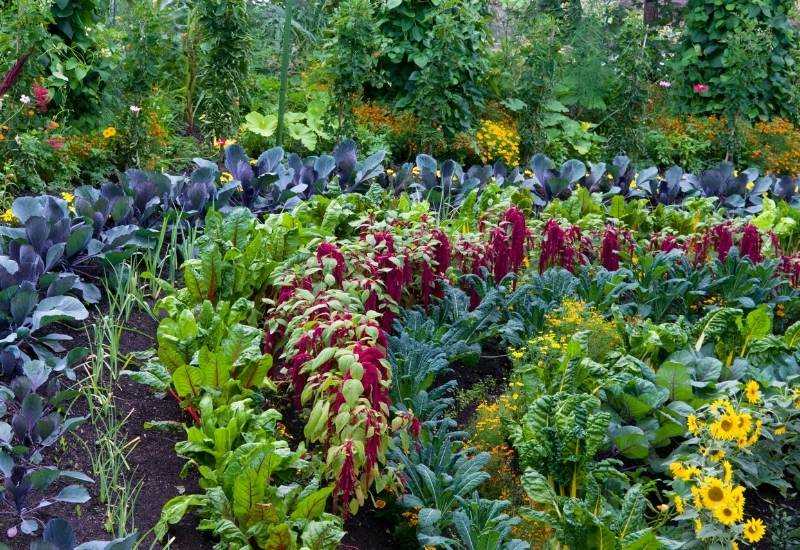
During December, when the temperatures drop and the outdoors become less inviting, it’s the perfect time to focus on cultivating indoor plants. Not only do indoor plants add beauty and vibrancy to your home, but they also help purify the air and improve your overall well-being. Here are a few indoor plants that you can cultivate in December:
Pothos
Pothos, also known as Devil’s Ivy, is a popular choice for indoor cultivation. It is a low-maintenance plant that can thrive in various lighting conditions, making it perfect for homes with limited natural light. Pothos has attractive heart-shaped leaves and trailing vines that can be trained to climb or hang. It’s a great way to add some greenery to your space!
Sansevieria
Sansevieria, commonly known as Snake Plant or Mother-in-Law’s Tongue, is an ideal plant for beginners or busy individuals. It can tolerate low light and infrequent watering, making it a resilient choice. Snake Plants have long, stiff leaves with a striking pattern that can enhance any room’s aesthetic appeal. They are also known for their air-purifying properties.
Peace Lily
Peace Lily is a beautiful flowering plant that can add elegance to your indoor space. They thrive in medium to low light conditions and can tolerate some neglect. Peace Lilies have dark green leaves and white flowers that bloom periodically throughout the year. They are also known for their ability to filter out harmful toxins from the air.
Succulents
Succulents are trendy plants that come in various shapes, sizes, and colors. These desert plants are known for their ability to store water in their leaves, making them drought-tolerant and low-maintenance. They thrive in bright light conditions and require minimal watering. Succulents can be a great addition to your indoor garden and can be displayed in unique containers or terrariums.
Herbs
Growing herbs indoors allows you to have fresh ingredients on hand for cooking, even during the winter months. Some popular herbs to cultivate indoors in December include basil, parsley, mint, and thyme. These herbs can be grown in small pots on a windowsill or under artificial grow lights. They not only add flavor to your dishes but also bring a refreshing aroma to your home.
Remember to provide your indoor plants with proper care, including appropriate lighting, watering, and occasional fertilization. Enjoy the process of cultivating and caring for your indoor plants during December, and watch them thrive and bring life to your home!
Greenery for the Winter Months
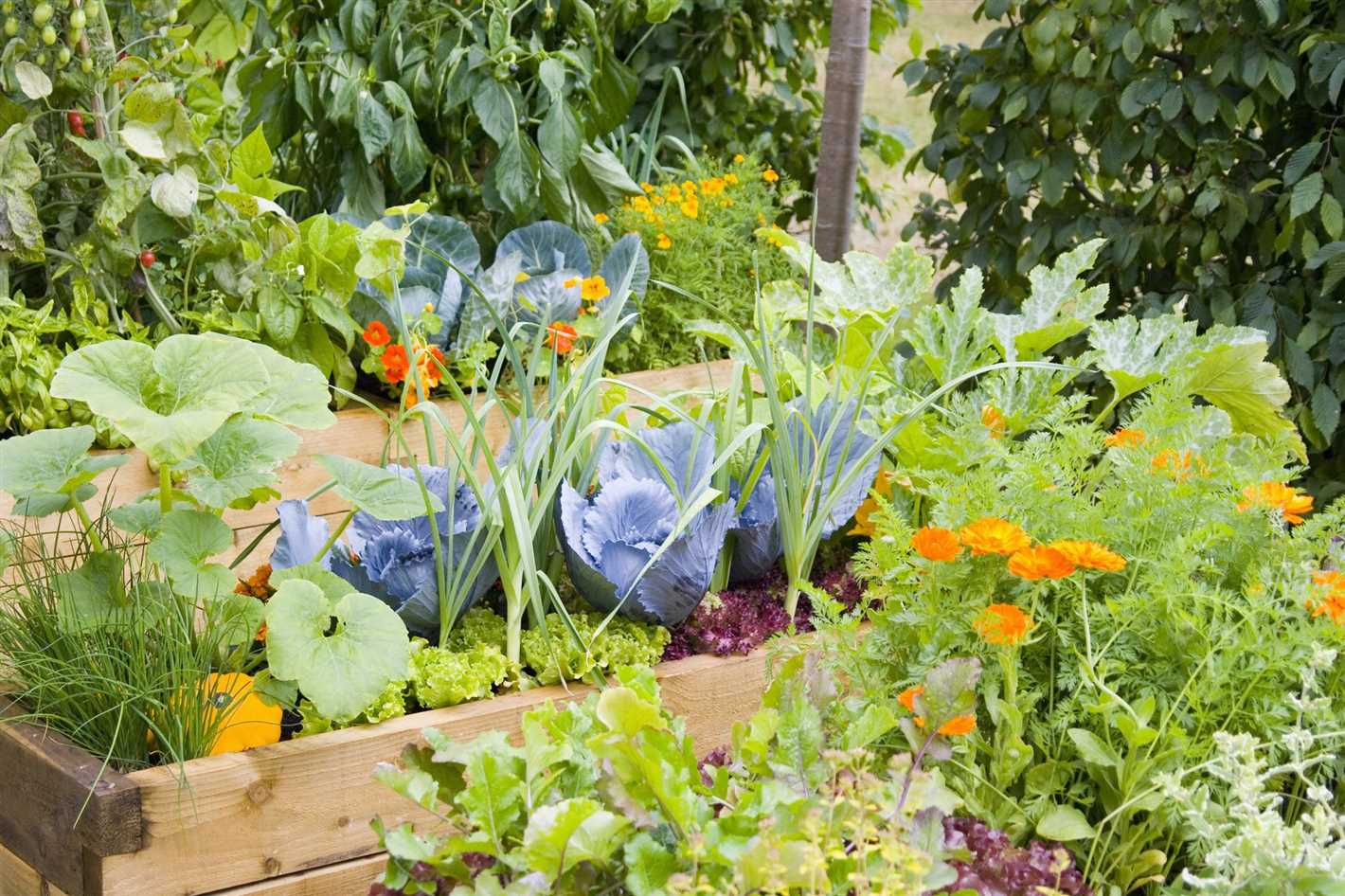
While winter may not be the prime time for gardening, there are still plenty of green options you can grow to add a touch of life and color to your surroundings. Here are some suggestions for greenery that can thrive during the winter months.
1. Winter Heathers
Winter heathers (Erica species) are hardy evergreen shrubs that can provide beautiful flowers and foliage throughout the winter. These plants come in various colors, including shades of pink, purple, and white, and they can add a lovely pop of color to your garden during the colder months. Winter heathers prefer acidic soil and are best planted in full or partial sunlight.
2. Ornamental Cabbages and Kale
Ornamental cabbages and kale (Brassica oleracea) are colorful plants that can tolerate the cold temperatures of winter. Their vibrant leaves come in a range of colors, including purple, pink, and white, and they can be a great addition to winter gardens. Ornamental cabbages and kale prefer full sun or partial shade and well-draining soil.
3. Evergreen Ferns
Evergreen ferns, such as the Christmas fern (Polystichum acrostichoides) or the holly fern (Cyrtomium falcatum), can add an elegant touch to your winter garden. These ferns have lush green foliage that stays green throughout the year, making them a great choice for adding greenery to winter landscapes. Evergreen ferns prefer partial or full shade and moist, well-draining soil.
4. Winter-flowering Jasmine
Winter-flowering jasmine (Jasminum nudiflorum) is a deciduous shrub that produces beautiful yellow flowers during the winter months. These flowers can help brighten up your garden on gloomy winter days. Winter-flowering jasmine prefers full sun or partial shade and well-draining soil.
5. Pansies
Pansies (Viola × wittrockiana) are cold-hardy annuals that can brighten up any winter garden with their cheerful flowers. These plants come in a wide range of colors and can tolerate the cold temperatures of winter. Pansies prefer full or partial sun and well-draining soil.
6. Winter Aconites
Winter aconites (Eranthis hyemalis) are small perennial plants that can bloom as early as January, adding a burst of yellow color to your winter garden. These flowers are known for their ability to withstand harsh winter weather and can be a delightful sight when everything else is still dormant. Winter aconites prefer partial shade and well-draining soil.
7. Cyclamen
Cyclamen (Cyclamen spp.) are small flowering plants that can add a touch of elegance to your winter garden. They produce colorful blooms in shades of pink, purple, and white, and their patterned leaves can also be attractive. Cyclamen prefer partial or full shade and well-draining soil.
8. Wintergreen
Wintergreen (Gaultheria procumbens) is a low-growing evergreen plant that can provide year-round interest in your garden. It has glossy green leaves and produces small white or pink flowers in the spring. Wintergreen prefers partial shade and well-draining soil.
Conclusion
While the winter months may not be abundant with flowering blooms, there are still a variety of plants that can add greenery and color to your garden during this time. From winter heathers and ornamental cabbages to evergreen ferns and winter-flowering jasmine, these plants can brighten up your garden and add interest to the colder months.
Questions and Answers:
What flowers can I sow in December?
In December, you can sow flowers like pansies, violas, sweet peas, and early-flowering bulbs such as daffodils and hyacinths.
Can I sow herbs in December?
Yes, you can sow certain herbs in December. Some herbs that can be sown in December include parsley, cilantro, dill, and chives.
What vegetables can I sow in December?
In December, you can sow vegetables like lettuce, spinach, kale, Swiss chard, and radishes. These are cool-season crops that can tolerate the lower temperatures of the winter season.
Should I sow my seeds directly in the ground in December?
It depends on the specific plant and your climate. Some seeds can be sown directly in the ground in December, while others may require starting indoors or in a greenhouse. It’s best to refer to seed packets or gardening guides for specific instructions.
Can I start my vegetable garden in December?
You can start certain vegetables in December, especially if you have a greenhouse or a protected growing area. However, in colder climates, it may be more practical to start your vegetable garden indoors and then transplant the seedlings outdoors once the weather warms up.
What are some flower varieties that can be sown in December for early spring blooming?
Some flower varieties that can be sown in December for early spring blooming include pansies, violas, and sweet peas. These flowers are known for their ability to withstand colder temperatures and bloom early in the spring.
Can I sow vegetable seeds indoors in December?
Yes, you can sow vegetable seeds indoors in December. This is a good option if you live in a colder climate or if you want to get a head start on your garden. You can use seed trays or pots and provide the seeds with the necessary warmth and light for germination.







